The Dunedin Fringe Festival (14-24 March 2024) wrapped up this past Sunday. The multidisciplinary arts festival is normally an annual event but, as we all know, these last few years have been anything but normal. We all experienced cancellations, lockdowns, and periods of self-isolation due to COVID-19. The first nationwide lockdown in New Zealand began at 11:59 p.m. on 25 March 2020 — exactly four years ago today. Although we wish we could forget this terrible virus, the health threat and inconvenience it causes still lingers years later.
Performing artists were hard hit, especially those who make their living performing in front of a live audience. It seemed fitting, then, that many of the events and performances at the 2024 Dunedin Fringe Festival celebrated the importance, the necessity, and the simple pleasure of social connection and collective experience. As the festival website stated, this was a conscious decision.
This year the Fringe team has chosen the words connection and community to inspire our approach to the festival: we want to create experiences that deepen relationships and build community between our artists, staff, venues and audiences.
For me, the event that most directly addressed the theme and spirit of the festival is the Blue Chair Movement. As the website explains:
The mission is simple.
See someone there, in a blue chair.
Sit opposite them. Hold them in your gaze.
Live in that space, just for a minute.
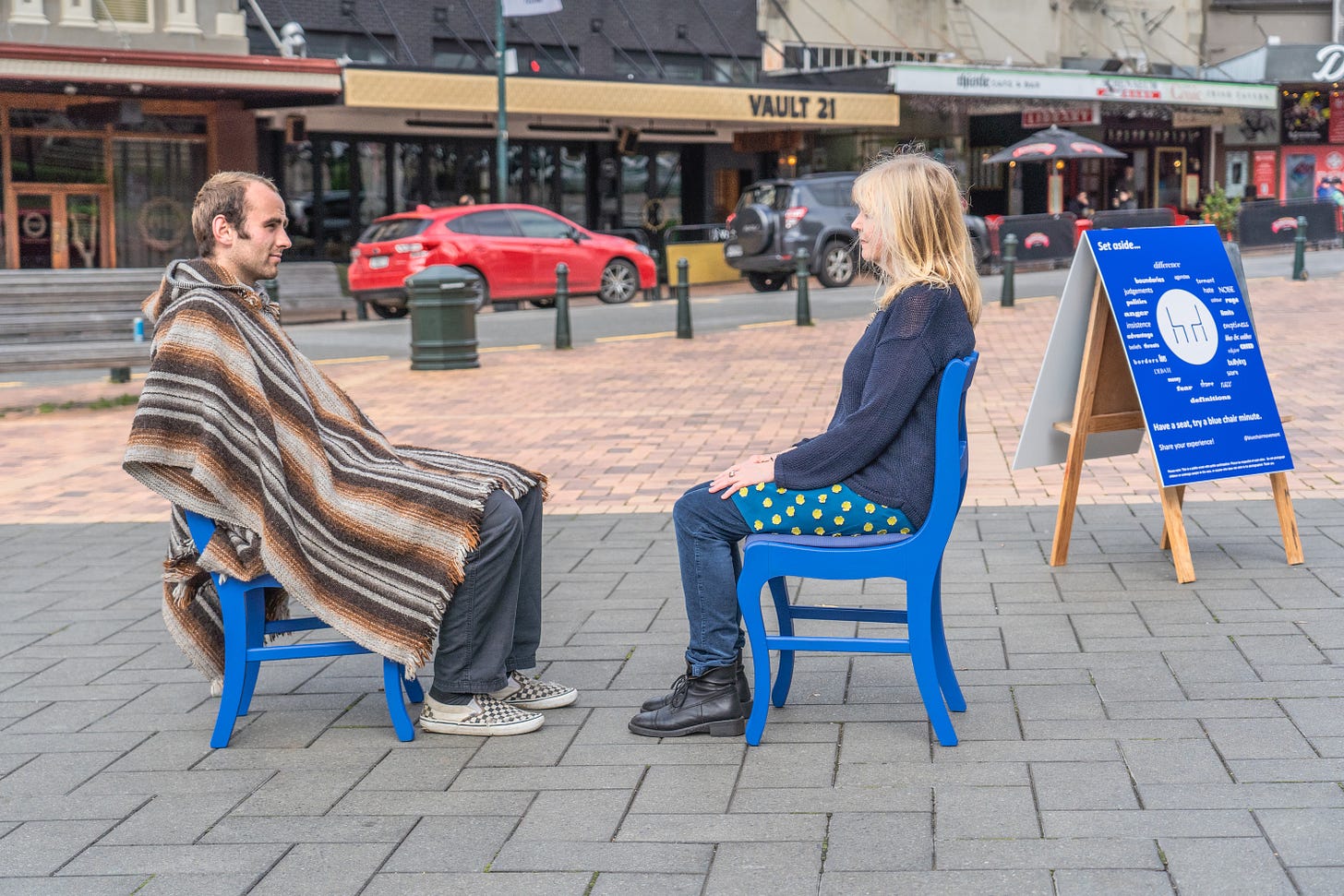
I took part in the Blue Chair Movement here in Dunedin on Sunday, 17 March, and again on Sunday, 24 March. I watched as people took a seat opposite one another and looked into the eyes of a stranger for 60 seconds, often longer. Afterward, they talked about the experience. Some cried and some embraced the person they had just met. Everyone seemed to be touched by the encounter. I tried it myself. As I expected, it was uncomfortable at the beginning, but it wasn’t difficult or confronting, and I was glad I gave it a try. The Blue Chair Movement is set to continue in The Octagon in Dunedin on Easter Sunday (March 31 ) and subsequent Sundays from 12:00 p.m. - 1:00 p.m.
This project made me think about my approach to photography and how few photographs I have that involve direct eye-to-eye (or eye-to-camera) contact (except photos of family and friends). The photos I’ve taken during political marches and rallies in recent months are exceptions. As an active participant rather than a detached observer, I like to immerse myself in the action and engage directly with the marchers. Carrying a camera gives me an excuse to initiate conversations and ask for permission to document the moment.
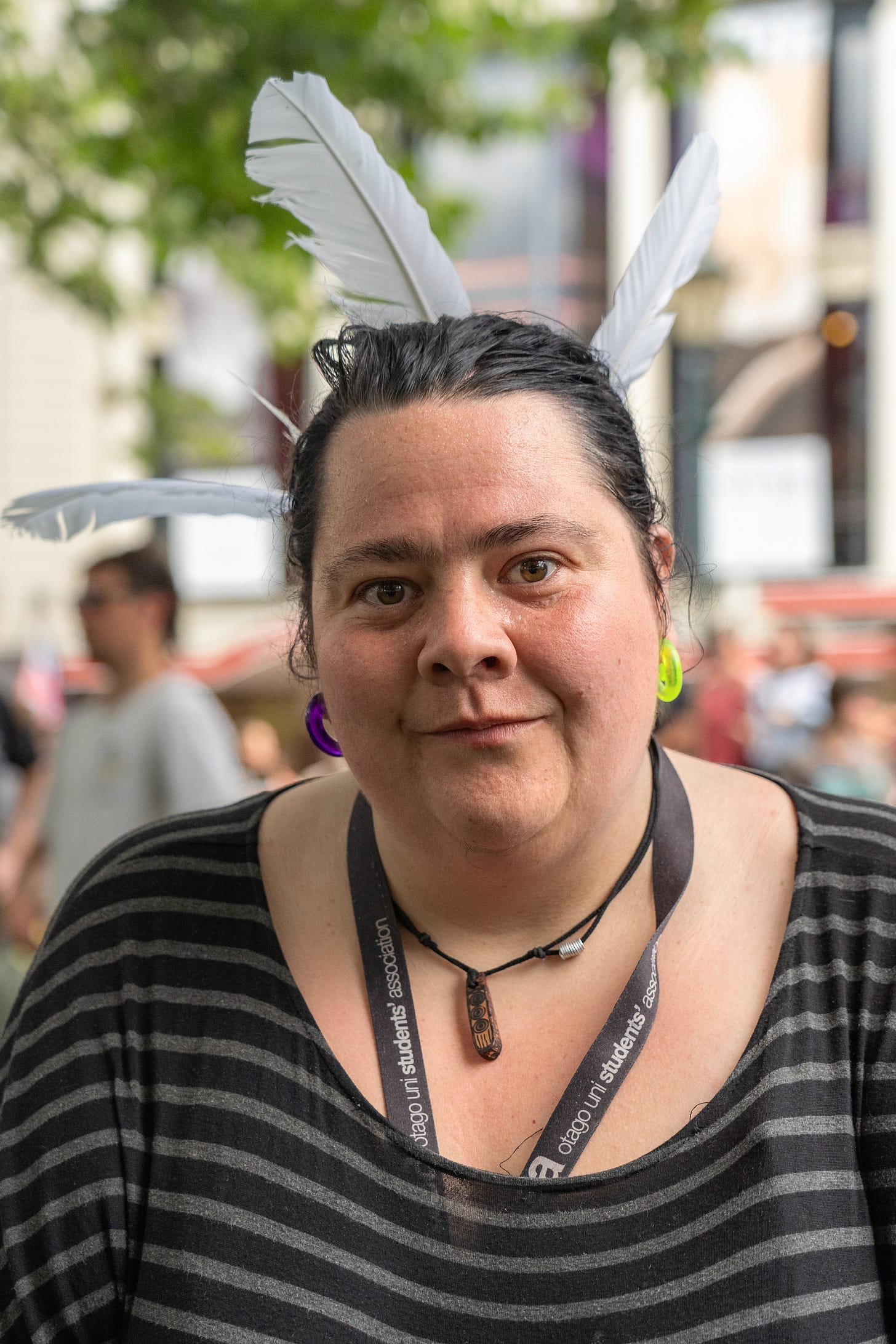
In Post 55 I discussed the Waitangi Day March and Rally that took place on Tuesday, February 6, 2024. During that event, I asked the woman in the photo above about the significance of the feathers in her hair. She told me that her ancestors were Taranaki Māori who had lived through the invasion of Parihaka in 1881. On November 5, the ‘Day of Plunder’ or ‘Te Rā o te Pāhua’, soldiers entered the papa kāinga (home base) expecting a fierce battle. Instead, they were welcomed with food and met by children who wore white feathers of peace, known as ‘raukura’, in their hair. You can read more about this important event in the history of Aotearoa New Zealand here.
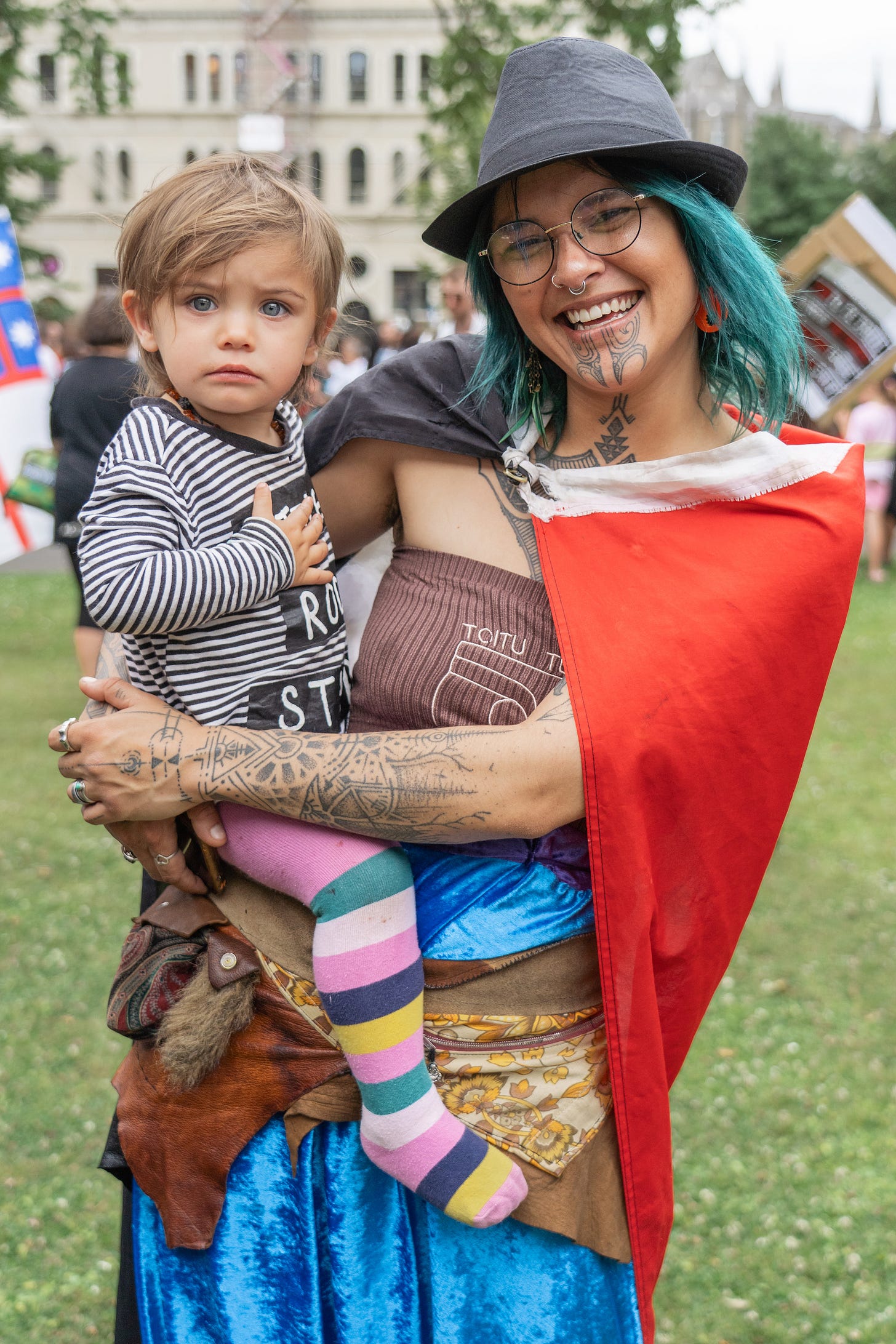
The Waitangi Day Hīkoi was a public expression of respect and support for Māori culture, indigenous rights, and Te Tiriti o Waitangi – the Treaty of Waitangi. Many of us Pākehā (New Zealanders of European descent) have been making more of an effort to understand Māori concepts like whānau, which is often used to refer to ‘family’, but means much more than that.

Rediscovering the many ways in which we are connected to one another and to the environment that sustains us is crucial if we are going to have any chance of addressing the many challenges we face.
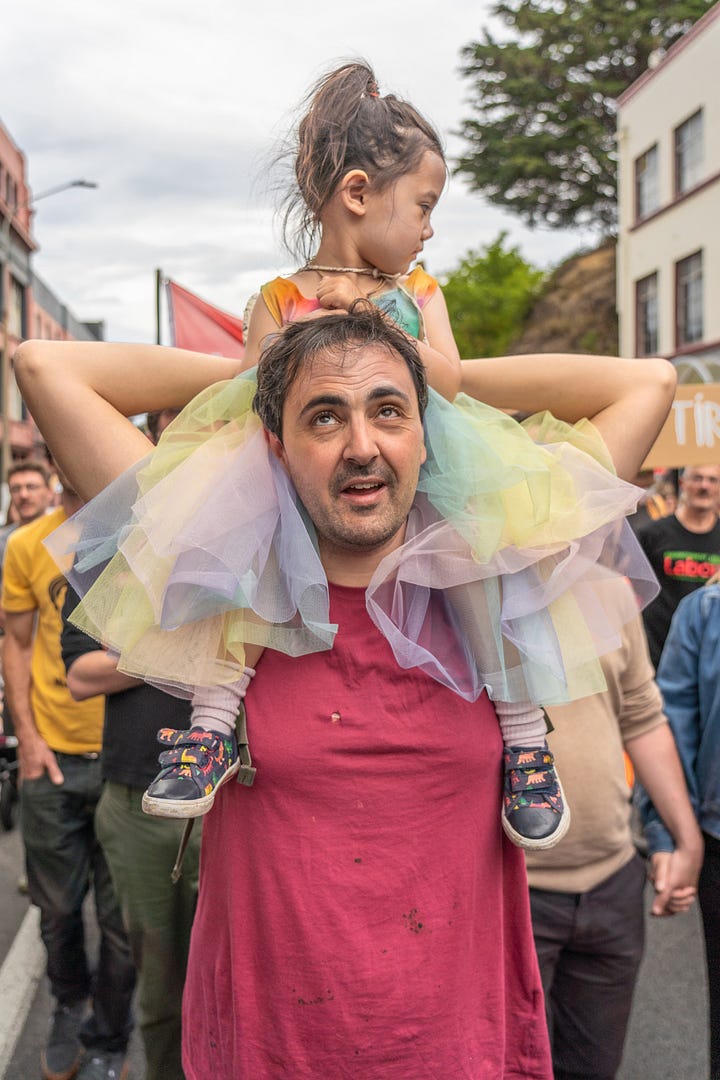
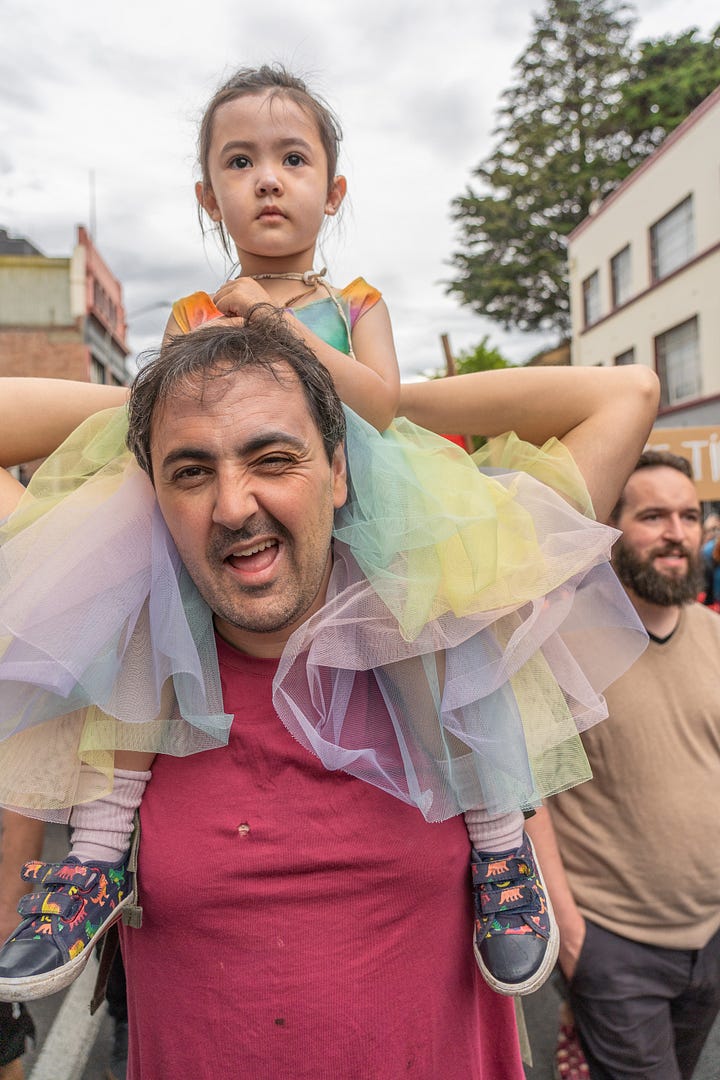
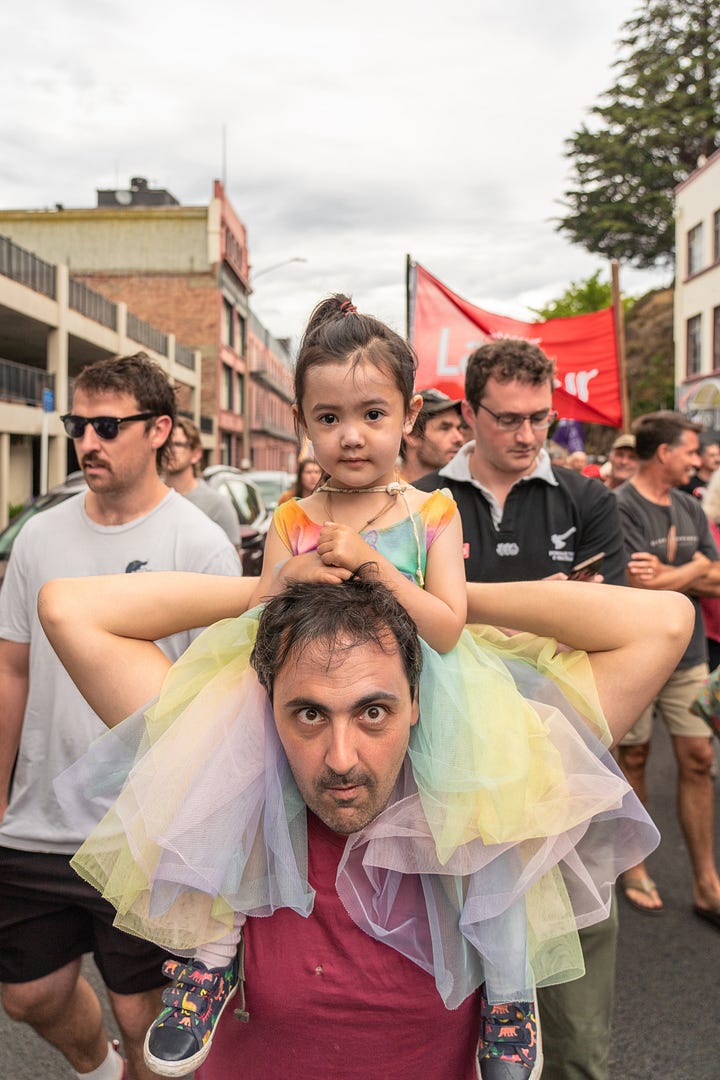
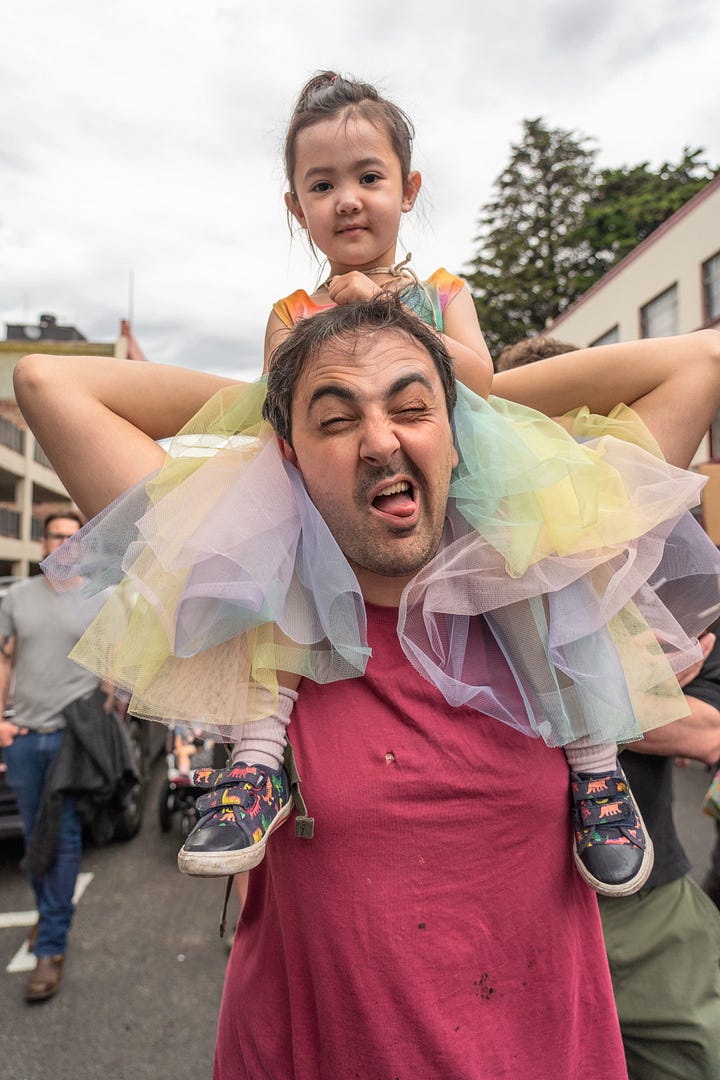
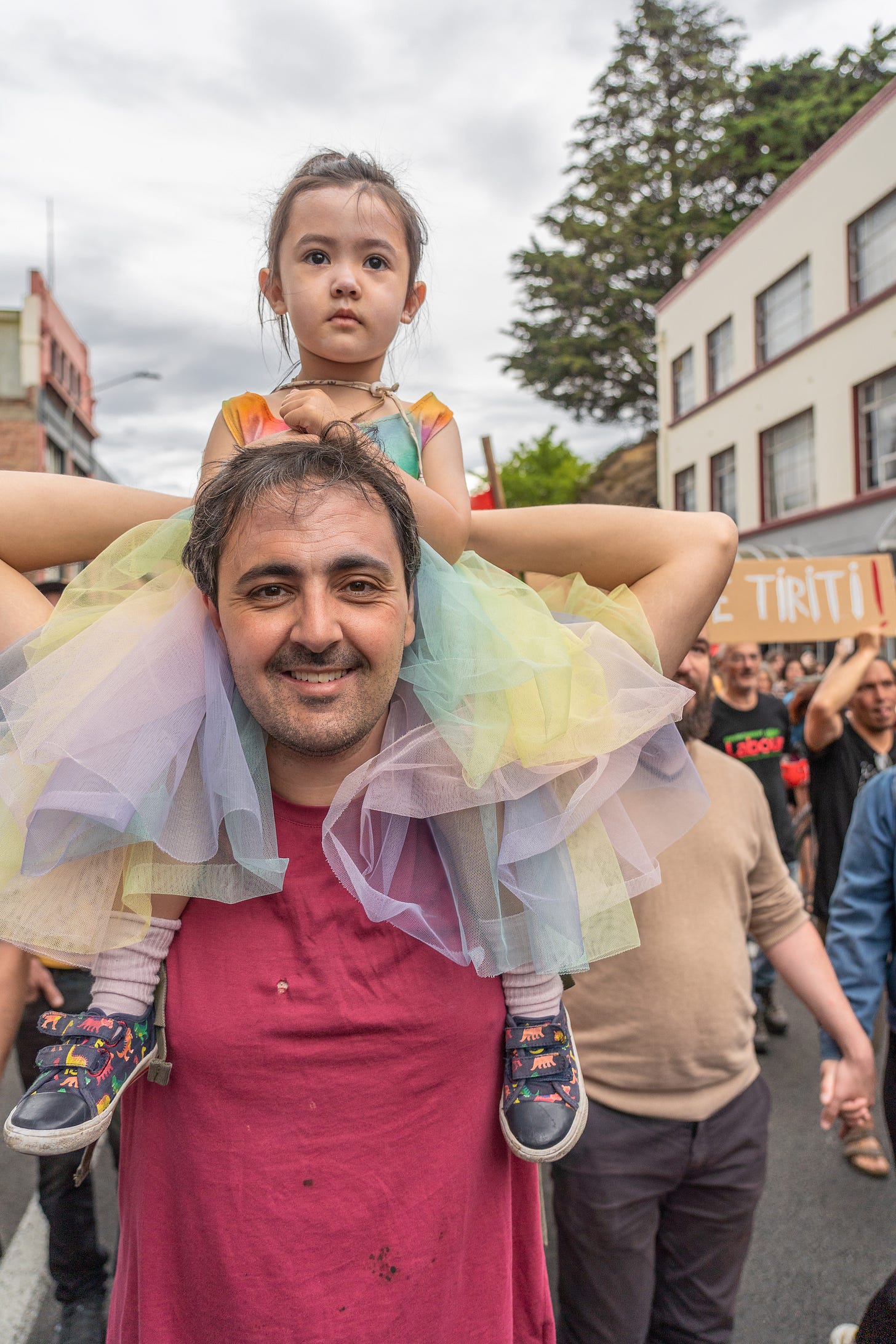
What’s next?
I haven’t finished processing the most recent photos of the Ceasefire Now! marches and rallies in support of the Palestinian community (they are continuing every Saturday here in Dunedin). Links to photos of past rallies can be found on my website at markmcguire.net. I’m almost finished editing photos of a live music event I attended a couple of weeks ago. I’ve also been experimenting with taking photos at night with an iPhone 15 Pro Max (the results are better than I expected). I’ll share whatever I manage to finish over the next week.
What do you think?
Thank you for taking the time to read this post. I invite you to leave a comment below.




Thanks for the moving portraits and the links pointing to Māori history. The Blue Chair practice has very strong echoes of Marina Abramovic’s “The Artist is in the Room”, which is as disturbing as it is moving and intimate. I’m sure you’re aware of it. And your photos really are about presence and relationship.
Love the content and the story! Thanks for sharing !